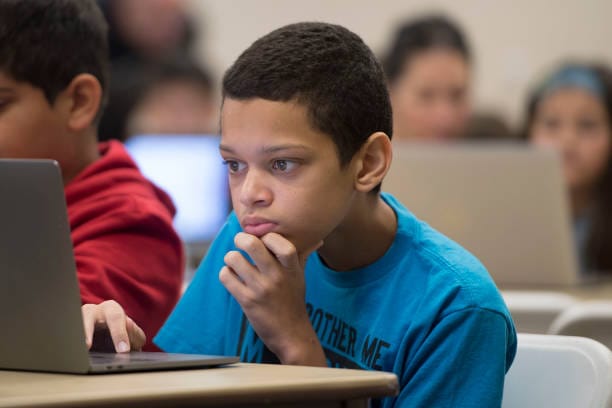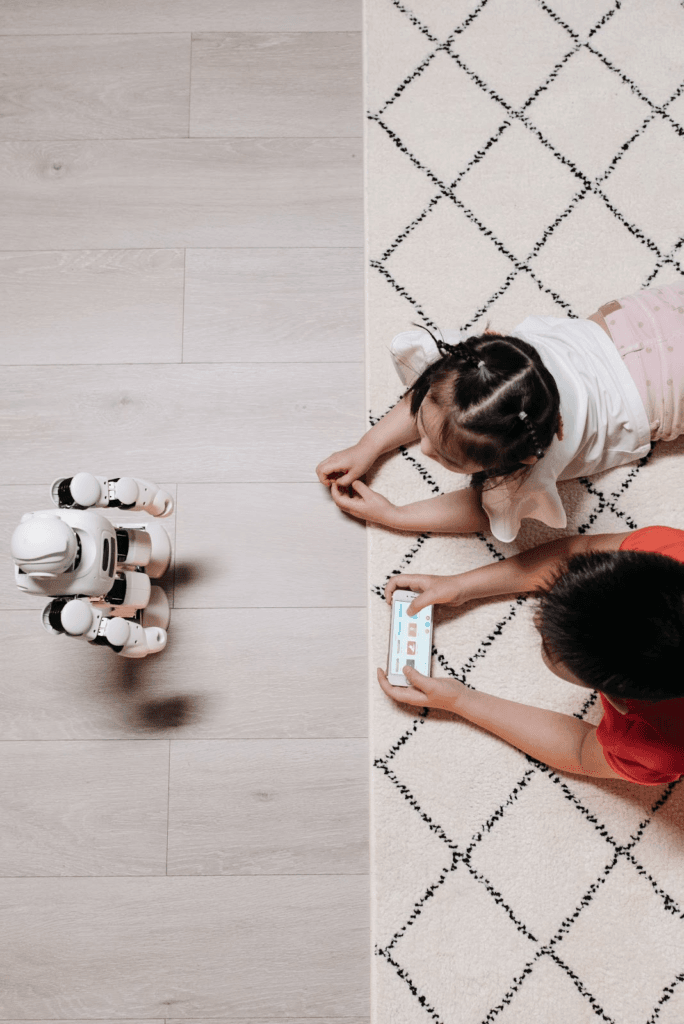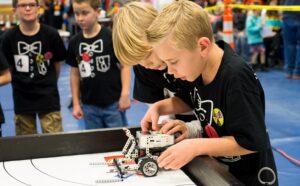Over time, technical advancements have turned the world upside down and changed our lives in unimaginable ways. Sure, this change has also significantly impacted an average kid’s lifestyle and put them at risk of screen addiction too soon. Scratch coding is the basis of programming for kids and beginners who wish to start coding in a fun and easy way.
But due to some concerns, parents often turn away from the idea of introducing technology to children. However, doing so does not benefit young minds in the long term. Instead, it is necessary to bring a balance between conventional and digital teaching ways to help prepare them for the future.
One way to ensure your kids keep up with time and gain the necessary skills for a better tomorrow is by introducing them to scratch coding or programming.
Amazingly, the Scratch coding platform is already in use by 18 million users. This makes it widely accepted and one of the most popular programming languages for kids and beginners.
So, why not join the many kids and teenagers and gear up for an exciting ride? As we go deep into this blog post, we will see what scratch coding is and the benefits of teaching kids this game programming language.
What is Scratch Coding?
Sure, the name Scratch might generate some beginner-level ideas in your mind, but what is it? Simply put, It is a coding activity that involves the use of Scratch programming language to build games and easy projects in coding and it is introduced explicitly for kids by the MIT Media Lab in 2007.
It helps introduce children to the basics of coding without worrying about complicated user interfaces and tons of errors.
Here, colored blocks are present on the screen in different elements like puzzle pieces. These boxes need to be arranged in a particular format to work on multiple projects like animations, games, interactive stories, etc.
Considering the fact that Scratch coding is a programming language, there are several rules and guidelines to be followed. If not, the blocks won’t snap together. This feature helps build logical and computational thinking skills.
Presently, it is operated by a non-profit organization called Scratch Foundation, and the creators claim that access to this block-based language will always be free.
See also: Top 15 Best Computer Programming Schools For Kids in Nigeria in 2024
Here are some key features of Scratch programming
1. Block-based programming: Scratch uses a drag-and-drop interface where users can snap together blocks of code like puzzle pieces. This makes it easy to understand programming concepts and create interactive projects without having to type out complex code.
2. Visual coding: Scratch uses visual blocks that represent different programming constructs such as loops, conditionals, and variables. Users can connect these blocks to create scripts that control the behavior of sprites (characters or objects) on the stage.
3. Sprite-based programming: Scratch projects typically involve creating and manipulating sprites, which are visual objects that can be animated and interact with each other. Users can customize sprites by adding costumes (images) and creating their own interactive behaviors using code.
4. Event-driven programming: Scratch follows an event-driven programming model, where users can define scripts to respond to events such as when a sprite is clicked, a key is pressed, or a timer expires. This allows for creating interactive projects that respond to user input or changes in the environment.
5. Community and sharing: Scratch has a large online community where users can share their projects, remix (modify) existing projects, and collaborate with others. This encourages creativity, collaboration, and learning from peers.
6. Extensibility: Scratch allows users to create their own blocks, which are custom sets of code that can be reused in multiple projects. This enables users to create their own functions and procedures, promoting code modularity and reusability.
Why should you Introduce Scratch Programming in your Child’s Curriculum?
It is vital to evolve with time and update the learning curriculum to meet industry standards. Online coding classes for kids will help the upcoming generation in multiple ways.
The 10 Benefits of Teaching Kids Scratch Programming
1. Scratch Coding Helps Encourage Creative Thinking
There’s no doubt that kids like to consume a lot of dynamic content, i.e., comics, cartoons, etc. But what if they could use their imagination to bring such concepts to life? Scratch encourages creativity by allowing users to create their own interactive stories, games, animations, and more using a visual programming language
Scratch’s motto is “Imagine–Program–Share!” and it has multiple design backgrounds and predefined sprites.
This is reflected in its large library of predefined sprites (images kids can create and program) as well as backgrounds which provide canvas children can use to develop their design, animation, and storytelling skills, giving life to the characters, solutions, and ideas they may have.
However, tiny tots also get a chance to build something out of the box by utilizing their creativity. Hence, the use of imagination is encouraged in kids.
See also: Top 10 Benefits of Coding and Robotics Education for Kids in 2024
2. Works on Problem-Solving Skills
Scratch embraces a constructionist approach to learning where students are active participants in their learning journey and knowledge is constructed based on their experiences. As they develop, they reflect and incorporate new ideas with prior knowledge.
This approach is beneficial for developing problem-solving in young minds. If they make a mistake, the program shows them the error and asks them to retry the step.
Scratch promotes problem-solving skills by encouraging users to break down complex tasks into smaller, manageable steps and find solutions through experimentation and iteration.
As a result, they learn to work on problems without seeking someone’s help. Like any other coding language, it also helps children look for better and more efficient ways to do the same task.
3. Develops Logical/ Critical Thinking Skills

Unlike problem-solving, logical skills help the learner analyze the possible outcomes of a move beforehand. This way kids learn to use rational thinking before continuing with the task.
Scratch challenges users to think critically and logically while designing and debugging their projects.
It encourages them to analyze problems, identify patterns, and develop strategies to overcome challenges, thereby enhancing their critical thinking skills.
Additionally, it is convenient to deep dive into the library of backgrounds and sprites to give your project suitable modification.
4. Improves Planning Skills
Think about it – how often, on average, does your child get to plan projects or use their imagination for project work? In most cases, the education system is not built to improve planning skills.
See also: The 8 Importance of Teaching Kids to Code in 2024 | 5 Years and Above
5. Accessibility
Scratch is designed to be easy to use, making it accessible to learners of all ages, including children as young as 8 years old.
Its block-based interface simplifies coding concepts and eliminates syntax errors, making it a great starting point for beginners.
No special programs or tools are needed, just an internet connection, a web browser, and an account. This means your kids can continue learning in the comfort of their own homes.
Beyond that, it’s the employment of block-based coding, and the fact that it doesn’t rely so much on text opens up a world of opportunities for those with learning deficits.
6. Scratch is Fun, Engaging, and Interactive
It is a well-known fact that kids easily absorb new material when the learning process is fun and engaging. Forcing kids to pick up books and study doesn’t work anymore.
With multiple gadgets available at home, you can’t expect them to learn unconventionally.
Scratch Online for Kids is a learning and entertainment platform that instantly catches a child’s attention with all the colorful visuals.
As such, they show more interest in education and stay self-motivated. This programming language lets them add specific personalized sounds and images to customize the project.
The developers at the Scratch Foundation understood this clearly which is why the Scratch user interface is replete with vibrant colors and visually appealing elements.
But that’s only one aspect of why Scratch is so compelling.
Another is because of the sheer number of options kids have at their disposal to unleash their creativity. With blocks of code, they can make their characters sing, dance, and jump.
The characters are customizable, and so are the backgrounds, voices, sounds, and even photos that can be introduced – making it easy for kids to create interactive programs easily.
See also: Top 10 Best Kids Coding Languages to Learn in 2024
7. Prepares them for High-level Programming Languages

Scratch is one of the best and most fun ways for kids to learn coding in contrast to other programming languages that have strict rules on usage and often require learning relevant text commands to make the most of them.
Scratch eliminates that need and allows kids to focus on conceptualizing, building, designing, and sharing their creations with friends.
It is an ideal platform for kids to develop programmatic thinking which they can later use as a springboard to launch into a career of high-level coding.
After one point, kids and young minds will likely study HTML, C, and other high-level programming languages in school. Coding becomes necessary if they hope to establish a career in the Computer Science field.
Directly studying professional text-based languages can be complicated.
Scratch will help build a solid base for the future without worrying about missed semicolons, brackets, etc. Kids can grasp concepts with visual learning and implement them in actual work projects later in life.
8. Levels up Academic Performance
Most parents wrongly understand that receiving exceptional grades results from continuous studying efforts.
Instead, it depends on how well the child can organize their thoughts, think of practical solutions, and neatly present their ideas.
Scratch programming helps kids prepare for such situations by giving them a productive outlet.
Skills gained through coding will help improve their mathematical skills and provide better opportunities for clearing qualitative and quantitative assessments.
9. Persistence and resilience – the keys to success
Both types of thinking can be taught through coding and both are highly practical in later life. The first, persistence, involves not giving up at the first sign of failure.
Coding, to some extent, requires and encourages failure as an essential prerequisite to finally getting the code right.
This might take minutes, but it might also take days. The trial-and-error process doesn’t allow a quick defeat but instead motivates kids to continue and pursue a successful outcome.
Secondly, resilience (closely related to persistence) requires one to keep looking for a solution even if there doesn’t seem to be one, even if nothing seems to be working and the code simply isn’t doing what it should!
Or, as we would say, debugging the dysfunctional code or construction. Coding teaches kids that there always is a solution; one just needs the patience and time to find it.
And it’s more than obvious why every parent would appreciate the learning of these skills happening as fast as possible!
10. Collaboration

Scratch allows users to collaborate on projects by sharing and remixing each other’s work. This encourages teamwork, social interaction, communication, and learning from others’ code, fostering a collaborative and inclusive learning environment.
Conclusion
Education in the digital era has reformed a lot. The world has come a long way, from smart classrooms to online lectures.
However, there’s still a need to empower kids to handle future work opportunities in the best way possible.
Scratch coding classes will be a good one for your kids during the holidays. Check for our program offerings to enroll your child.
Frequently Asked Questions
It is a coding activity that involves the use of Scratch programming language to build games and easy projects in coding and it is introduced explicitly for kids by the MIT Media Lab in 2007.
Scratch is a programming language and an online community where children can program and share interactive media such as stories, games, and animation with people from all over the world. As children create with Scratch, they learn to think creatively, work collaboratively, and reason systematically.
Scratch is a programming language and an online community where children can program and share interactive media such as stories, games, and animation with people from all over the world. As children create with Scratch, they learn to think creatively, work collaboratively, and reason systematically.
Scratch coding is built specifically for kids ages 8 to 16, But younger children may want to try ScratchJr, a simplified version of Scratch designed for ages 5 to 7.
Kids need to know how to use Scratch programming because it helps them think creatively, develop critical thinking abilities, collaborate, and be persistent. Scratch also makes learning enjoyable, encourages experimentation, fosters a love of learning, and helps kids feel more confident.
Yes, your child can start learning Scratch without having prior knowledge or experience in coding. They should learn it before Python, because they can focus on learning computational thinking, which is the core principle of coding, without having to worry about syntax.
Here are five great options for anyone looking to get started with Scratch!
1. Scratch YouTube videos
2. Live online Scratch classes taught by an expert
3. Raspberry Pi Scratch interactive tutorial
4. Blog post tutorials and challenges
5. Code.org hour of code Scratch tutorials
As a parent, make sure your child learns a beginner-friendly language like Scratch with your guide and encouragement when he or she makes a mistake. Choosing a language that is tough for first-timers to learn is a no-doubt method to set kids up for failure and increase their level of lack of interest in coding.
According to a user, “Their moderation practices are not too good. You can easily get hacked via some loophole. I was once banned back in 2018, and Scratch ignored ALL of my emails regarding my ban. I was only unbanned in 2020 after they added an option that allows us to appeal.”
Teaching coding to children can result in improvements to cognitive abilities such as attention and memory, as well as non-cognitive skills like teamwork and collaboration, as noted by World Bank.
Scratch is a programming language, thus allowing your child to get involved in writing lines of code. This opportunity allows your child to build video games and software which is a good digital skill and literacy.
Reference
https://stem-genius.com/5-benefits-of-teaching-scratch-coding-to-kids/
https://www.robowunderkind.com/blog/10-benefits-of-coding-for-kids
Recommendation
- 8 Best Coding Games for Kids that Teach Real Programming Concept
- The 8 Importance of Teaching Kids to Code in 2024 | 5 Years and Above
- How To Create A Succesful Coding Or Robotics Club For Kids in 2024
- How To Teach Coding and Robotics To Kids With Learning Disabilities in 2024
- How Coding and Robotics Are Used in Different Industries




